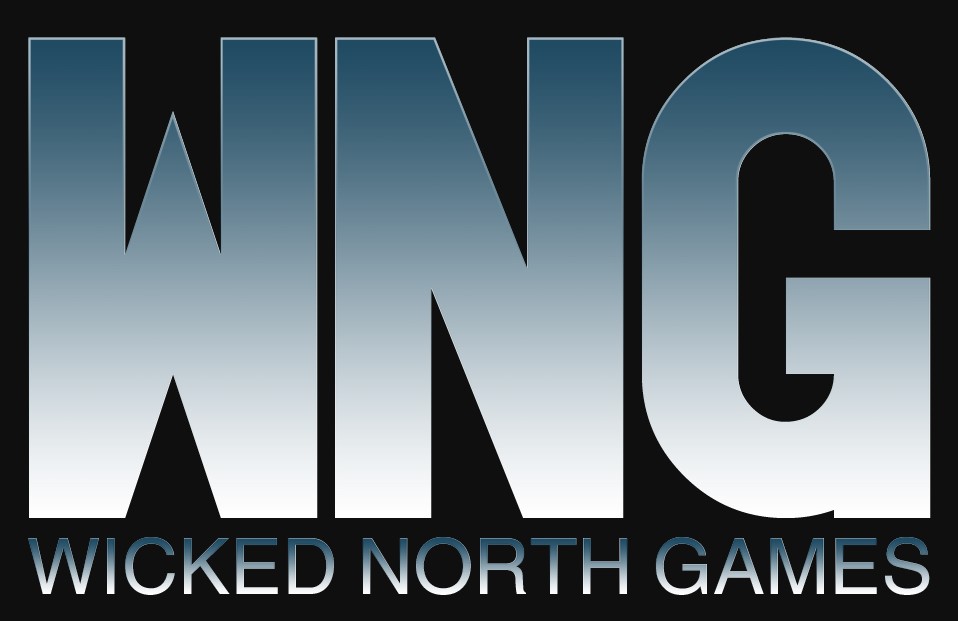This industry is without a doubt difficult to enter as a game developer. Jobs are limited and competition is stacked high as the pool of talent is filled with many veterans and novices with experience and talent to wield against one another. We got our start with Wicked North Games about four years ago on a whim. We wanted to bring back the d6 system and this delusions of grandeur that we might be important and change things in the industry. The industry needs some definition here before proceeding further.
The table top role playing game industry is a niche. It lies squarely between board games and live action role playing (LARP), in a realm where many traditional board game players feel uncomfortable, and many LARP’ers get bored. Without the need to say more on this, its a tough place to make games. There are a few elephants in the room between Dungeons and Dragons, Whitewolf, Pathfinder, Star Wars, and a few other older games with long history and strong chops. For over a decade, D&D was the reigning champion of the Table Top RPG industry and it weighed on everyone in positive and negative ways.
In the RPG game industry are small veins of fandom, mostly revolving around specific genres, intellectual products, and game mechanics. I know people still in love with older forms of D&D and unwilling to give up THAC0 (To Hit Armor Class 0) calculations. Wicked North Games falls under the d6 umbrella. The d6 umbrella of games was once wide and far reaching under the leadership of West End Games. WEG was a small company that rose to the top of the heap with strong game development on top of strong intellectual products. They developed universes and advanced game settings, impacting the very core of the Star Wars universe. An example: Aurabesh, the primary alphabet and font used for Star Wars, was created by a talented designer, specifically for a role playing game under WEG’s ownership. Aurabesh is still used in Star Wars; I know I saw some in the on set photos for Episode VII. Enough with this fanboy stuff: d6 gaming has a diverse and deep history, with a strong sense of loyalty from those who try it out. It is a simple and fast, robust and exacting role playing game mechanic.
We chose d6 for our love of its origins and our love of the versatility behind it. This placed us into another niche, an even smaller spot on the map of role playing games. Luckily, we saw an opening when WEG released the d6 system to OpenD6, and we took it.
We created a game setting around it, one that never went to publish, specific to the Riddick universe intellectual product. We built it from the ground up for this purpose, shaping and re-shaping the game system so that it worked fluently across the IP and within the science fiction genre. We came to eventually realize that the system would work with other genres, so we refined it more and more. We made Azamar around it, introducing our own brand of d6 called Cinema6. It is under this foundation that all of our games lie to date.
Azamar is a fantasy world setting that taught us lots of lessons. We launched Azamar through a Kickstarter campaign that got us just enough money to scrape by, getting us a little into publishing and learning lots of lessons along the way. I’ll get into that in my second post on this subject. Azamar taught us about layout and design, printing, writing, editing, and generally the basics of building a game setting from scratch. It is a tough lesson.
We then set our sights on the Steampunk Western: Westward. Westward is a labor of love, with deeply entrenched themes in distant science fiction, but ideas of clinging to the past. With Westward we took the last bunch of lessons we learned, and got a whole new set of complications. We learned more about time management, putting a project on Kickstarter, and charging too little for shipping with variable shipping rates. We also learned more about planning, project management, as well as continuing to improve our process.
We want to make our games better and better, improving everything we love so we can give more back as we move forward.
